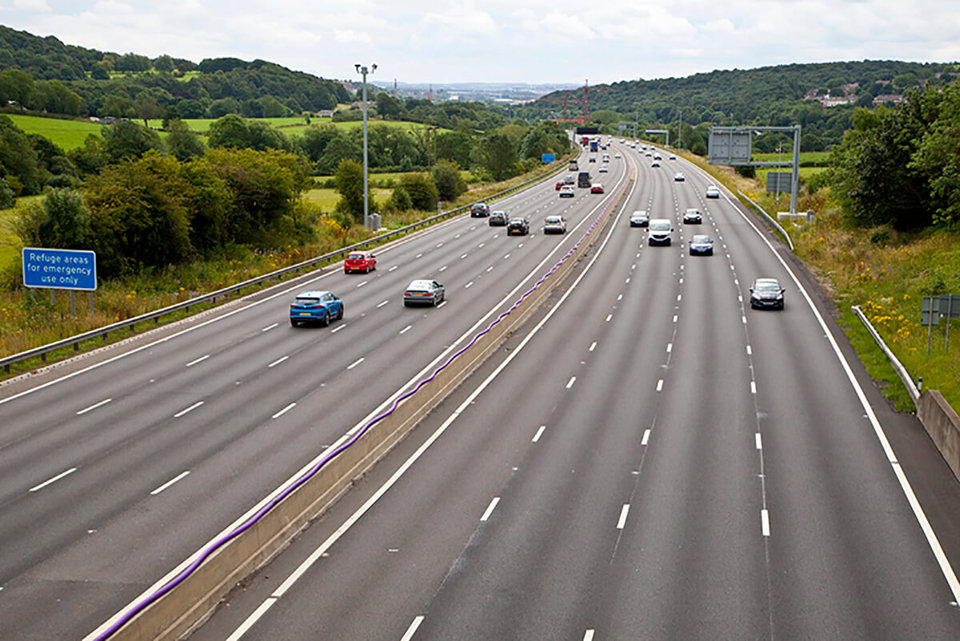Eight out of 10 drivers think that the removal of hard-shoulders on so-called ‘smart’ motorways has made them more dangerous, according to an AA Populus poll.
The AA raised concerns over smart motorway safety in a recent letter to the new Transport Secretary Chris Grayling, after previously raising the issue with the road safety minister, Highways England and the Transport Select Committee.
The main concern is the lack of lay-bys when the hard-shoulder is used as a running lane. The Highways England guidance is for the Emergency Refuge Areas (ERA) to be no more than 2.6km apart (approximately 1.5 miles) whereas the AA would like to see at least twice as many lay-bys and they should be twice the length.
If a car breaks down without sight of a lay-by it is likely to stop in a live running lane where it will be at increased risk of being hit from behind, says the AA.
If an HGV is parked up in the lay-by it makes it almost impossible for a car to safely enter the lay-by.
Highways England has also reported a problem of drivers (in particular foreign trucks) parking in the ERAs when it is not an emergency. Some officials believe that a clearer name is needed for the lay-bys.
When given selected names in the AA Populus poll, the most popular was Emergency Breakdown Area (49%), Emergency Refuge Area (21%) and Breakdown Area (9%).
However, when drivers were asked to suggest their own names it became abundantly clear that many were not at all happy with the removal of the hard-shoulder or lack of lay-by provision.
There were hundreds of suggestions, including: death zone; useless concept refuge area; desperate unreachable haven; and good luck breaking down beside this space.
AA president Edmund King said: “Four fifths of our members think that motorways without hard shoulders are more dangerous.
“Whilst we support measures to improve motorway capacity, we do not think that safety should be compromised. We do not accept that the current criteria of an Emergency Refuge Area or exit at least every 2.6km is safe.
“Breaking down in a live running lane with trucks thundering up behind you is every driver’s worst nightmare. The official advice is to dial 999 which just shows how dangerous the situation can be.
“If drivers can see the next lay-by, they are much more likely to make it to the relative safety of that area even if their car has a puncture or is overheating. If they can’t see the lay-by, they often panic and stop in a live running lane. If more lay-bys are designed at the planning stage it will be less expensive and safer.
“Unprompted, our members came up with some scary names for the Emergency Refuge Areas - which indicates just how worried they are. It is time for the Government to go back to the drawing board and design a scheme acceptable to drivers.”
In addition, even when a Red X is flashed up to warn drivers to avoid a lane where a car has broken down, collisions are still occurring, says the AA.
An AA member was hit on the M6 smart motorway near junction 13 last week in such a situation.
Meanwhile, it claimed a driver was spotted on the M3 all lane running roadworks section last week trying to change a tyre in a live running lane. No advance warning was given.





















Glyn Holloway - 26/09/2016 11:46
As a regular user of the M25 it is, as you know, obvious that there are not enough emergency refuges. They are also sometimes poorly sighted such that warning signs have had to be put in place to tell drivers that slow lorries may be exiting the hidden refuge. Also the number of vehicles that continue in the left lane whilst the red X is flashing is huge, frustrating and dangerous. Most drivers reactions to the vehicles is “I am not going to let you out” me included and then anger as a whole stream of them are let out causing lane two to come almost to a halt, adding to the dangers. If it could be indicated that these cars were being pictured and prosecuted with a visible flash, maybe fewer would do it and the rest of us would feel that justice was being done.